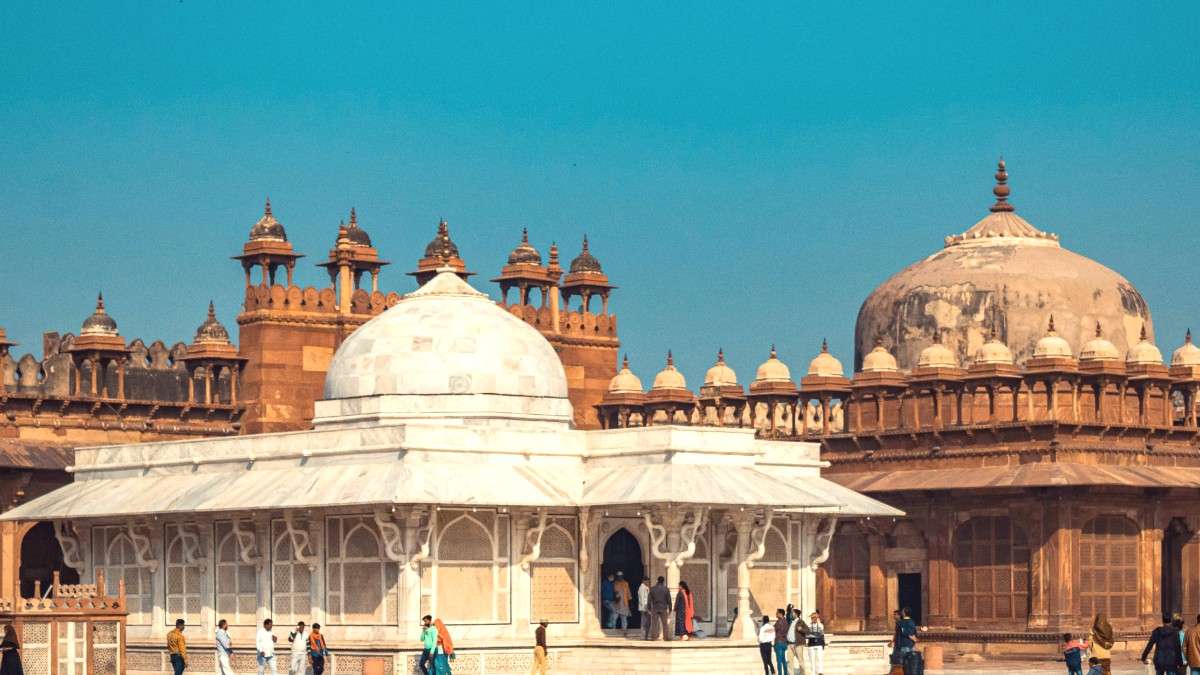
Uttar Pradesh, India
This is a hallmark of the region's culinary identity. Mughal emperors brought with them their Central Asian and Persian culinary preferences, blending with local Indian spices and ingredients.
Mughlai dishes feature creamy gravies, generous dry fruits, nuts, and exotic spices like saffron, cardamom, and mace. Expect slow-cooked meat dishes, various kebabs, kormas, and elaborate biryanis. This cuisine mirrors imperial court opulence.
Ghee, yogurt, cream, paneer, lentils, chickpeas, and a variety of seasonal local vegetables.
Complex blends include green and black cardamom, cloves, cinnamon, bay leaves, saffron, cumin, coriander, turmeric, and chili peppers.
Rich, savory, often spicy, with sweet and tangy notes from ingredients like tamarind or jaggery. Fresh cilantro and mint garnishes.
Food is often consumed with the right hand, especially breads or drier dishes. The left hand is traditionally considered unclean. Cutlery is perfectly fine to use.
Remember to wash hands before meals.
Dishes are commonly shared, placed in the center of the table. Order several to sample a variety of flavors.
Politeness suggests offering others a share from shared dishes.
At some traditional or smaller local eateries, removing shoes before entering might be expected, notably if seating is on the floor. Observe local practice.
This gesture shows cultural respect.
Often a light meal, with items like parathas, puri-bhaji, or toast and eggs in hotels.
For many locals, the main meal, typically between 1 PM and 3 PM.
Often the heaviest meal, generally eaten after 8 PM, extending to 10 PM or later.
Stalls operate throughout the day, offering snacks and quick bites between main meals.
Explore these iconic dishes that embody the flavors of Agra and its surroundings.
Quick bites that are popular throughout the day.
A selection of refreshing drinks, both non-alcoholic and alcoholic.
Agra's signature sweet, made from ash gourd, often flavored with saffron or rose water. Found at specialized sweet shops.
A must-try local specialty.
A rich, sweet pudding made from grated carrots, milk, ghee, and sugar, garnished with nuts. A popular winter dessert.
Seasonal delight during cooler months.
Deep-fried milk solids soaked in fragrant sugar syrup. Served warm, a beloved Indian dessert.
Sweet and comforting.
Specific sweets and savory items are prepared and shared.
Sweet dumplings enjoyed during Holi.
Various traditional sweets for the festival of lights.
Inquire locally about special festival foods during your visit.
India provides a vast vegetarian selection. Vegan options require specifying "no dairy" (doodh, dahi, ghee, paneer) and "no honey."
Look for "Pure Veg" restaurants.
Many meat dishes are halal; inquire at restaurants. Kosher food is generally not widely available, plan to self-cater.
Seek "Halal meat" advertisements.
Translation apps (Google Translate with Hindi language pack for offline use) can aid communication.
Beyond simply eating, engage with the local food culture through immersive experiences.
Available in Agra, learn Mughlai or North Indian cuisine.
Explore Agra's bustling markets and street food hubs.
Occasionally held in Agra, coinciding with festivals or cultural events.
Enjoy dinner with stunning views of the Taj Mahal from select Agra hotels.
A memorable evening experience.
Some tour operators arrange authentic home-cooked meals with local families for a genuine cultural exchange.
Experience true Indian hospitality.
Always opt for bottled water or water from a reputable filtration system. Avoid tap water.
Choose busy street food stalls with high customer turnover, which suggests freshness. Look for freshly prepared items.
Carry hand sanitizer and use it frequently, especially before meals.